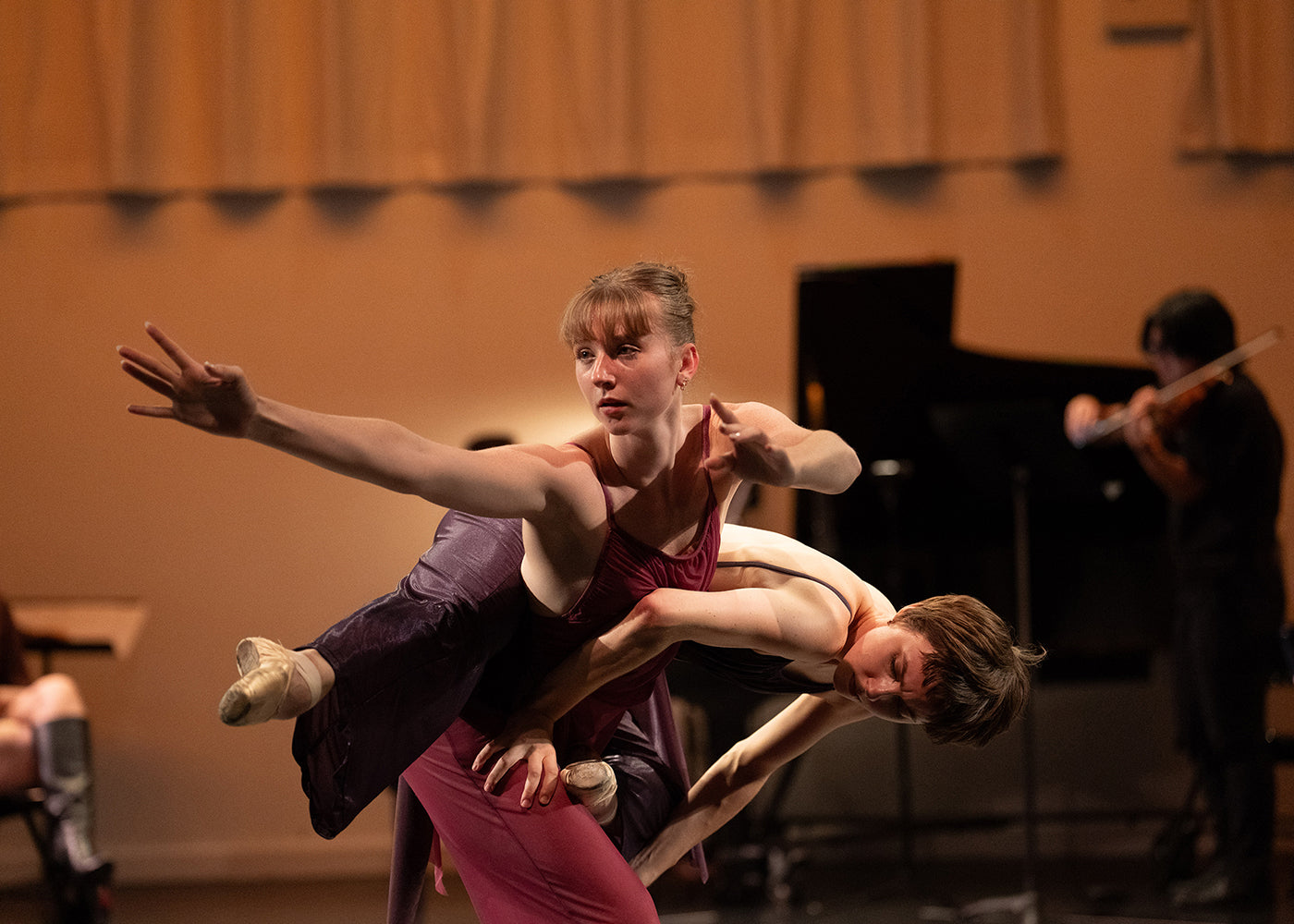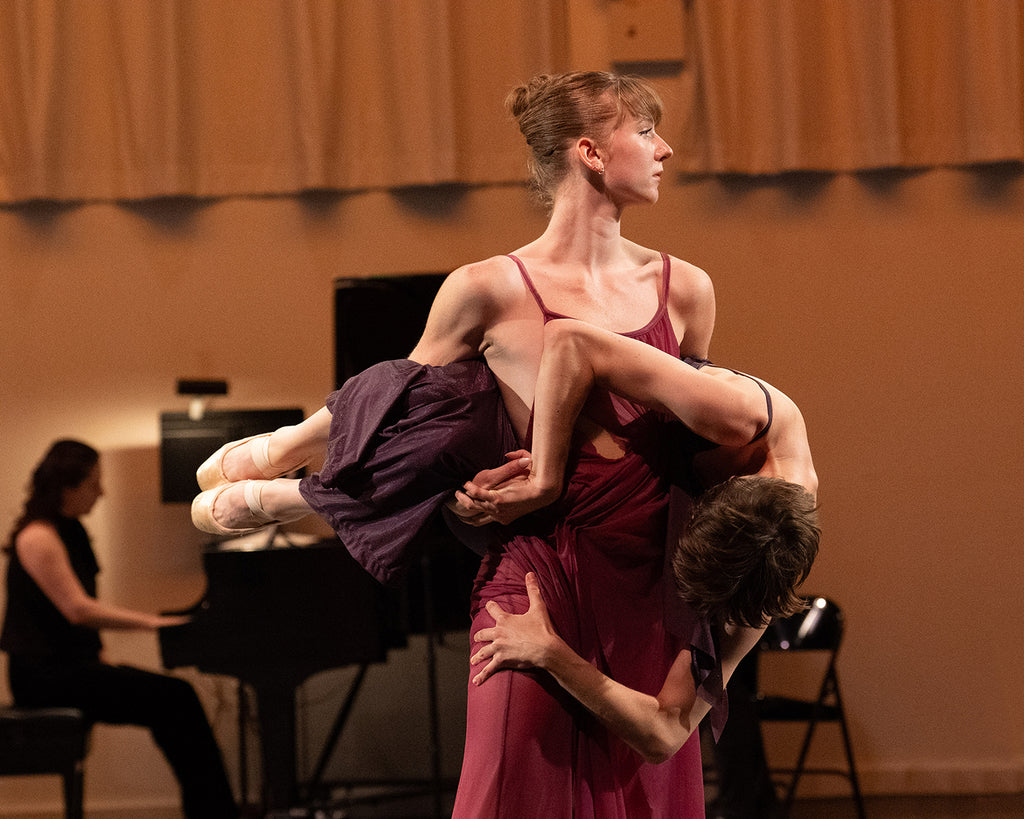Clothing was also central to Coco Villa’s “I Am Swimming with Zaza,” at the first fall performance of Black Aesthetics, curated by Malcolm-x Betts and Arien Wilkerson. The work begins and ends with Villa alone and seems to track a journey of self-actualization. In silence, facing upstage, they groove and contemplate a dress on a hanger. They put it on, add a blindfold, and those actions summon an ensemble of dancers in black. In ruffles, fringe, gloves, and sheer fabrics the six dancers fan out on a checkered floor. The sounds of Spanish guitar music are punctuated with stomps, or what sounds like the dropping of blocks, and performative breathing that hisses. Villa and another dancer in a matching dress melt through a duet of gestures where a hook that pulls on their cheeks becomes a gun, then a microphone, and finally a cigarette for stomping out. The ritualistic section concludes with the sentiment, “Whatever I repress, manifests,” sounding out across an empty, dark stage.
When the dancers return, the vibe is physical education. Scarves reminiscent of flag football float up in the air as a sandbag drags and some kind of tug of war finds a rope entangling a pair of dancers. They appear absorbed in parallel play until a strobe draws them into a vibrating mass. When a voice over intones: “Whatsoever I can conceive of in my mind, so it shall be,” the sentiment smacks of the great American experiment, or at least the better angels of it.
Villa’s work is rooted in Colombian-Caribbean spirit traditions and explores, in their own words, “the thin membrane between the real and the fantastical.” The final section, in which the cast is radiant in red, feels like an apotheosis. Hands upturned, they shift their hips and pop their ribcages with precision to a drum. A unison phrase repeats as each dancer walks with personal style to exit through the audience. We are left with Villa, rippling their torso without missing a beat, untired and undeterred.












comments